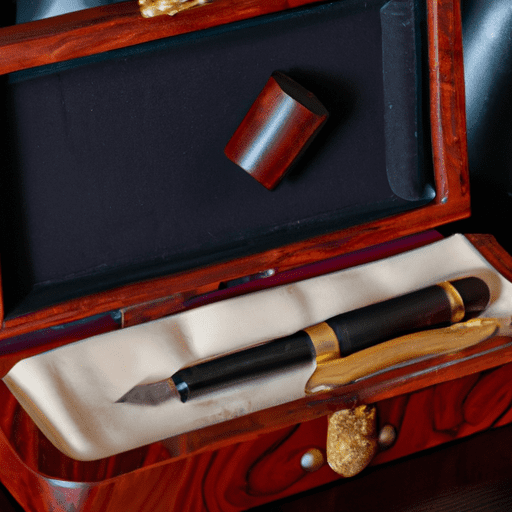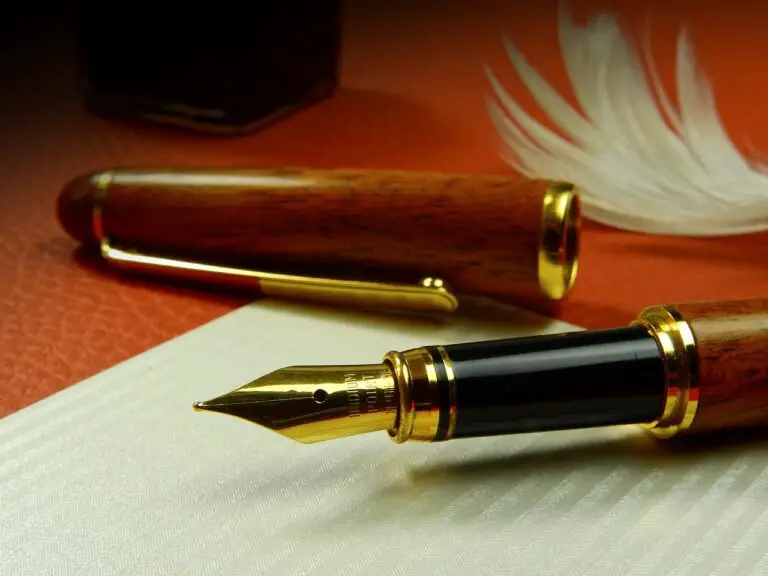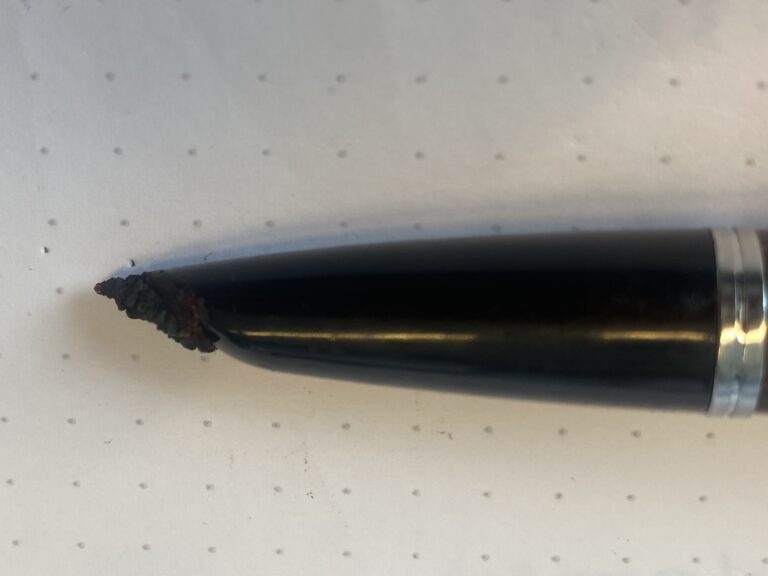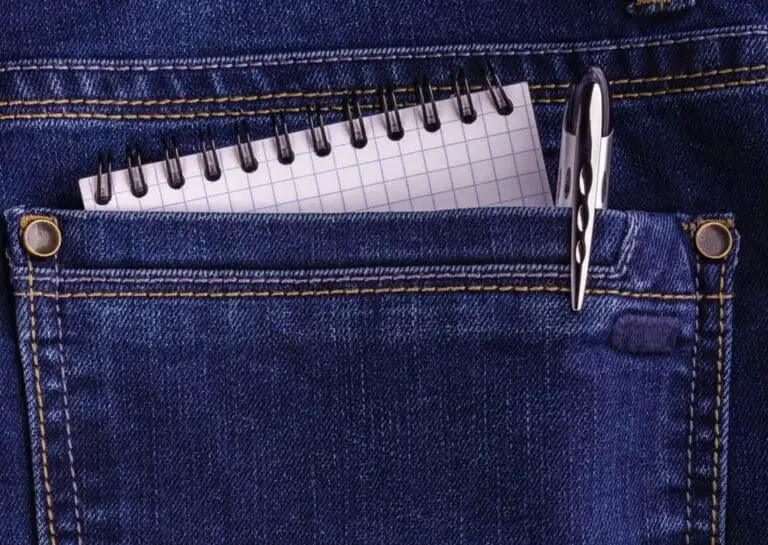Best Fountain Pen For Beginners
As a dedicated fountain pen enthusiast, I can attest to their allure; once you’ve experienced it, going back to ballpoint pens won’t cut it anymore. But for those who are new to this world of fine writing instruments, choosing the perfect beginner-friendly fountain pen can be quite daunting.
In today’s fast-paced digital age, finding innovative ways to express ourselves is more important than ever – and what better way than with an exquisitely crafted tool designed for centuries of creative expression? So please sit back, relax, and let me introduce you to some exceptional options that cater specifically to beginners while offering the subtle sophistication every modern-day writer craves.
- Types Of Fountain Pens
- Nibs And Refills
- Ink Flow And Visibility
- Price And Durability
- Design And Ergonomics
- Frequently Asked Questions
- Can I Use A Fountain Pen For Everyday Writing Tasks, Or Is It Only Suitable For Calligraphy And Formal Writing?
- Are There Any Specific Techniques Or Hand Positions To Learn When Starting To Write With A Fountain Pen For The First Time?
- How Often Should I Clean My Fountain Pen, And What Is The Proper Cleaning Procedure To Ensure Its Longevity?
- Is It Possible To Use Waterproof Or Permanent Ink With Fountain Pens, Or Will This Cause Damage To The Pen?
- What Are Some Common Beginner Mistakes To Avoid When Using A Fountain Pen For The First Time?
- Conclusion
Types Of Fountain Pens
When embarking on the fascinating journey of fountain pen enthusiasts, it’s essential to understand that many types are available for beginners. Each type offers a unique experience and charm, from vintage classics to modern innovations. As an expert in this field, I can assure you that finding the perfect match is not only about aesthetics but also considering factors such as maintenance tips and ink colors.
With so many choices out there, let me guide you through some popular options:
Cartridge/converter pens are ideal for beginners looking for ease of use and minimal upkeep while enjoying the elegance of writing with a fountain pen. They come equipped with disposable ink cartridges or refillable converters, allowing you to explore various ink colors and brands at your leisure.
Piston-fillers offer more substantial ink capacity and provide an immersive inking experience by using a built-in mechanism to draw ink directly into the pen barrel from a bottle – how satisfying!
Vacuum fillers operate similarly but employ an innovative filling system that creates a vacuum inside the pen to hold even larger amounts of ink securely.
If you’re feeling adventurous, eyedropper pens might be right up your alley; these require manual refilling by transferring ink from a bottle into the barrel using an eyedropper tool (hence their name). This method may seem daunting initially, but it provides unparalleled customization opportunities when mixing shades and creating personalized hues.
Armed with this newfound knowledge about various types of fountain pens tailored specifically for newcomers like yourself, we can move forward seamlessly into exploring other important aspects, such as nibs and refills, without hesitation.
Nibs And Refills
Imagine the graceful dance of a fountain pen’s nib as it glides effortlessly across the paper, leaving behind an exquisite trail of ink. The smooth interaction between the nib and the surface sets fountain pens apart from other writing instruments. As a beginner exploring this elegant world, you’ll want to consider nibs and refills when selecting your first fountain pen.
Nibs come in various sizes and materials, each offering a unique writing experience:
- Extra-fine (EF) or fine (F): Ideal for those with small handwriting or who enjoy precise lines; it may feel scratchy on specific papers.
- Medium (M): A versatile choice for everyday writing, balancing line width and smoothness.
- Broad (B) or stub: Perfect for calligraphy enthusiasts or anyone seeking bold strokes; requires more control over hand pressure.
When it comes to refills, different types cater to personal preferences in terms of ink colors and ease of use:
- Cartridges: Pre-filled with ink, these disposable options offer convenience by being inserted into the pen.
- Converters: Reusable devices that attach like cartridges but allow you to fill your pen using bottled ink.
- Piston-fillers: Integrated filling systems within the pen where twisting a knob draws up ink directly from a bottle.
- Eyedroppers: Requires manually transferring ink from a bottle into the pen’s barrel.
As you embark on your journey with fountain pens, remember that experimenting with different nib sizes and refill types will lead you toward discovering your ideal writing experience.
Now that we’ve delved into nibs and refills let’s explore another crucial aspect: ink flow and visibility.
Ink Flow And Visibility
When choosing the best fountain pen for beginners, ink flow and visibility are paramount. The consistency of the ink, the size and flexibility of the nib, the refillability of the pen, the color, transparency, and drying time of the ink, the smearing, blotting, and bleed-through, and even the waterproofing and smoothing of the ink are all important factors to consider. With the right pen and ink, it’s possible to have a writing experience that’s smooth, visible, and precise.
Ink Flow
Imagine holding a sleek, beautifully crafted fountain pen in your hand as it effortlessly glides across the paper, leaving behind a rich, vibrant ink trail.
As a fountain pen expert, I can assure you that one critical aspect to consider when selecting the best beginner-friendly fountain pen is its ink flow. You’ll want a smooth and consistent flow that allows for artistic expression while minimizing any potential frustration from skipping or blotching.
A well-designed pen ensures minimal fountain maintenance and easy cleaning – an essential factor for those new to this sophisticated writing instrument.
With innovative technology constantly pushing the boundaries of what’s possible with design and function, plenty of options cater to beginners looking for an exceptional first-time experience without compromising on quality or performance.
So go ahead and plunge into the world of fine writing; you won’t regret it!
Visibility
As you delve into the fascinating world of fountain pens, visibility is another essential aspect to consider. Whether it’s ink color or grip comfort, these factors significantly impact your writing experience.
When choosing a pen that offers excellent visibility, look for options with transparent barrels or ink windows; this will allow you to easily monitor your remaining ink levels and ensure consistent flow without any unpleasant surprises.
Moreover, selecting a pen with an ergonomic design and comfortable grip can make all the difference in maintaining proper control while writing – especially when trying new techniques or experimenting with different nib styles.
So remember, as you explore the myriad possibilities within fine writing instruments, always prioritize ink flow and visibility to ensure a truly enjoyable journey!
Ink Consistency
Let’s not overlook the importance of ink consistency in our quest to achieve the perfect balance between ink flow and visibility.
As a fountain pen aficionado, you’ll appreciate how crucial it is to select just the right ink types for your prized writing instruments; after all, inconsistent inks can lead to skipping or even clogging of your nibs.
When exploring various options, consider using converter filling systems that allow you to try out different brands and varieties and provide greater control over ink capacity – an essential element when striving for optimal performance.
Embrace this innovative world of diverse inks and explore their unique characteristics, ensuring that every stroke of your pen glides effortlessly across the page!
Price And Durability
Now that we’ve dipped our toes into the world of fountain pens let’s dive deeper and explore price points and durability ratings. As a beginner, you might hesitate to invest in an expensive pen immediately. Fear not! Plenty of affordable options with impressive durability won’t break the bank.
To help you navigate your way through this exciting new territory, take a look at the table below, which highlights some fantastic options for beginners:
| Fountain Pen | Price Range | Durability Rating |
|---|---|---|
| Pilot Metropolitan | $15 – $20 | High |
| Lamy Safari | $20 – $30 | High |
| TWSBI ECO | $30 – $40 | Medium |
These pens offer various price points while maintaining solid durability ratings, ensuring that your first experience with a fountain pen will leave you craving more innovation and creativity in your writing endeavors. Remember that investing in a good fountain pen can elevate your writing experience like never before!
As you continue to grow as a fountain pen enthusiast, consider factors such as design and ergonomics on top of affordability and sturdiness. This will ensure you find the perfect fit for your budget and personal preferences. Let’s move forward to learn about these aspects in greater detail.
Design And Ergonomics
Picture yourself holding a beautifully designed fountain pen, its weight balanced perfectly in your hand as you set out to craft elegant letters and words.
The fusion of design and ergonomics is crucial for beginners when selecting the ideal fountain pen, allowing them to harness their inner creativity while avoiding fatigue during long writing sessions.
A well-crafted pen should feel like an extension of your hand – natural, comfortable, and ready to flow with your thoughts.
The most innovative fountain pens on the market have undergone rigorous durability testing to ensure that they can withstand the test of time and usage by eager novices.
These pens are crafted from high-quality materials such as stainless steel or resin composites, providing stunning visual appeal and enhanced resilience for everyday use.
As you embark on your journey into the world of fountain pens, remember that finding a perfect blend of form and function is essential, ensuring that your chosen instrument inspires you every time you pick it up – without compromising on comfort or longevity.
Frequently Asked Questions
Can I Use A Fountain Pen For Everyday Writing Tasks, Or Is It Only Suitable For Calligraphy And Formal Writing?
Ah, the misconception that fountain pens are solely reserved for calligraphy and formal writing is common. However, I’m delighted to inform you that you can use a fountain pen for everyday writing tasks!
Many aficionados enjoy using these elegant instruments for mundane scribbling as they offer unparalleled ink flow and smoothness on paper. The beauty of utilizing such a versatile tool lies in its adaptability – from composing personal letters to jotting down quick notes at work or doodling during downtime.
Moreover, with an extensive array of ink selections available today, there’s no limit to the creative expression you’ll experience while embracing this age-old yet constantly evolving art form. So go ahead and indulge yourself in the gratifying world of fountain pens – it’s time to elevate your writing game like never before!
Are There Any Specific Techniques Or Hand Positions To Learn When Starting To Write With A Fountain Pen For The First Time?
When you start writing with a fountain pen, you must learn the proper techniques and hand positions to ensure a smooth and enjoyable experience.
Establish a correct grip by holding the pen between your thumb and index finger while resting it on your middle finger for support. This position allows for better nib control and helps prevent fatigue during longer writing sessions.
Experimenting with ink types is also important since different inks can affect how the pen glides across the paper.
Remember, practice makes perfect – as you become more comfortable using these elegant instruments, you’ll discover that they offer unparalleled precision and inspire creativity in every stroke!
How Often Should I Clean My Fountain Pen, And What Is The Proper Cleaning Procedure To Ensure Its Longevity?
To maintain your fountain pen’s optimal performance and longevity, it’s crucial to clean it regularly, as this prevents clogging and other issues caused by dried ink or debris. Typically, you should clean your pen every four to six weeks, but if you change ink types frequently or use highly saturated inks, more frequent cleaning is advisable.
For proper pen care procedures, start by disassembling the pen gently (according to its specific instructions), then flush the nib and feed it with lukewarm water until it runs clear; avoid using hot water as it may damage delicate components. Soak these parts for several hours or overnight in an ultrasonic cleaner filled with cool water and a touch of ammonia-free dish soap for a thorough cleanse.
Once appropriately cleaned, allow the pieces to air dry completely before reassembling and refilling with ink. As a fountain pen enthusiast who embraces innovation, regular maintenance will ensure that your writing instrument remains reliable and enjoyable throughout its lifetime!
Is It Possible To Use Waterproof Or Permanent Ink With Fountain Pens, Or Will This Cause Damage To The Pen?
You can use waterproof or permanent ink with fountain pens, but choosing the right ink types for your specific pen and writing style is essential.
As a fountain pen expert, I must emphasize that not all inks are created equal—some may cause clogging or damage certain pens.
Opt for high-quality, well-formulated inks from reputable brands to satisfy your innovative spirit while ensuring your pen remains in top condition.
These inks provide the permanence and water resistance you desire without harming your treasured writing instrument.
Remember to clean your pen regularly and thoroughly when using these inks to maintain peak performance!
What Are Some Common Beginner Mistakes To Avoid When Using A Fountain Pen For The First Time?
Ah, the excitement of using a fountain pen for the first time! But beware, there are common beginner mistakes that you’ll want to sidestep.
Firstly, it’s crucial to understand ink types and filling methods – avoid using waterproof or permanent inks, as they can clog your pen and damage its delicate mechanisms. Stick with recommended fountain pen inks until you’re more comfortable experimenting.
Secondly, don’t press too hard when writing; unlike ballpoint pens, a gentle touch is all you need to let the nib glide gracefully across the paper.
Lastly, ensure proper maintenance by regularly cleaning your pen—especially if changing ink colors or after prolonged storage—to keep your trusty writing tool performing at peak innovation for years.
Conclusion
In conclusion, fountain pens are not just for calligraphy and formal writing; they can also be used for everyday tasks. As a beginner, you’ll find that using a fountain pen will become second nature with practice and attention to proper technique. Hold the pen at the correct angle and let its weight work.
Cleaning your fountain pen regularly is essential in ensuring its longevity. It’s recommended to clean it every few weeks or whenever changing ink colors. A simple cleaning procedure involves rinsing the nib unit under water until clear, then drying it gently before reassembling the pen. Be cautious when using waterproof or permanent inks, as some may cause damage to certain pens.
Lastly, one key aspect of mastering a fountain pen is learning from common mistakes beginners make. Avoid pressing too hard on the paper or holding the pen too upright while writing.
With patience and persistence, you’ll soon appreciate the unique joy of writing with a quality fountain pen!










